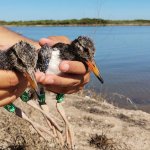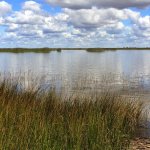Over the last year and a half, almost all aspects of human activities, at all levels of society, have been affected by the Covid-19 pandemic, and biodiversity research and conservation activities are no exception. We consulted with some of our Network site partners to better understand how their shorebird monitoring and conservation have been affected, and how they overcame the obstacles to ensure that shorebirds remain in focus.
All of the sites consulted suffered impacts on the implementation of their activities, but these differed according to the framework of restrictions imposed by each country, and according to the decisions made at the institutional and personal level which aimed to avoid exposure.
During the early months of the pandemic, the policies of strict isolation came into effect in most countries with the aim of preventing the spread of the virus, and this period coincided with the beginning of spring in the Northern Hemisphere – the reproductive season for shorebirds.
During the Northern Hemisphere spring and summer, many sites in WHSRN carry out censuses, monitoring activities, festivals, field visits for students from colleges and universities etc. Some of these were canceled, but many were able to carry out activities in a different way, thereby maintaining the species site monitoring, and the linked communities that support and learn from the shorebird conservation efforts.
At Mono Lake, censuses of phalaropes had been planned from boats and light aircraft with the intent to compare the results. The flights were canceled because of the increased risk in the enclosed cabins, but the boat censuses continued with the crew wearing face masks, and the donor was flexible enough to allow for more boat censuses in place of the flights. It was decided to focus efforts on the boat censuses as these are inherently more independent than flight censuses, and thus less prone to cancellation due to the pandemic or for other unforeseen reasons (such as extreme weather for example).
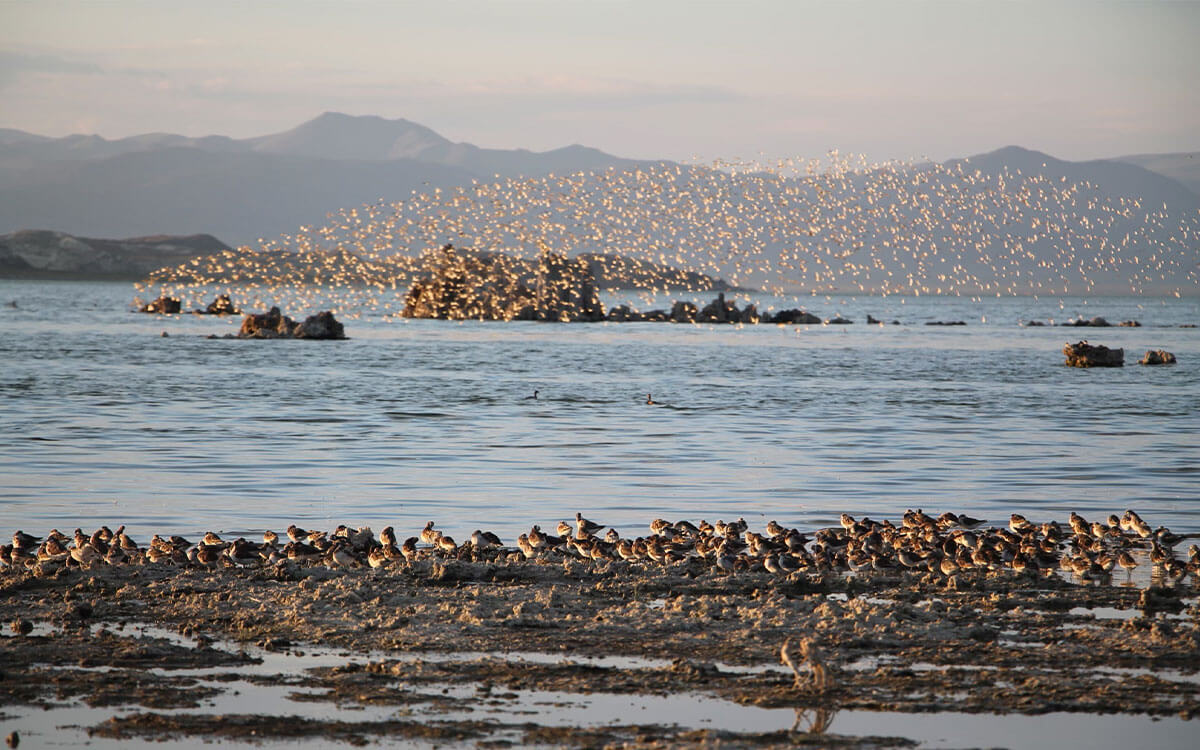
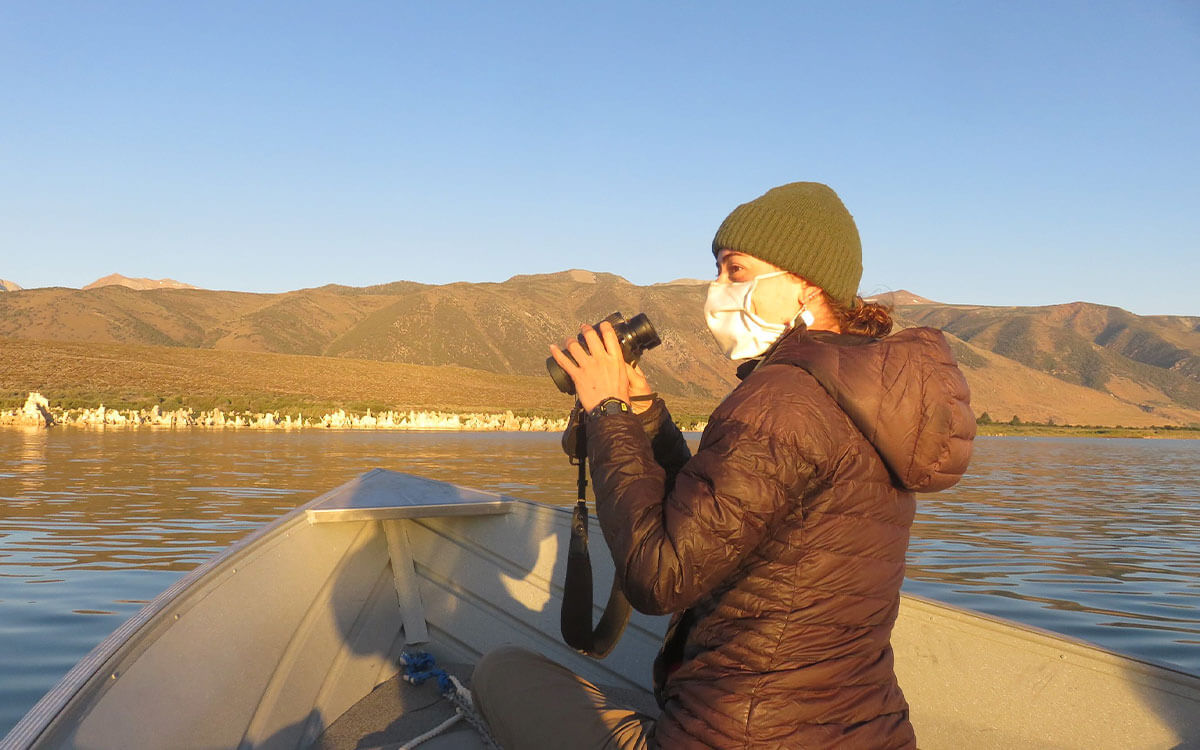
Left: Clouds of Phalaropes at the Mono Lake WHSRN site. Photo: Sam Rapp. Right: Sarah Hecocks monitoring Phalaropes at Mono Lake. Photo Ryan Carle.
On the Georgia Barrier Islands educational activities and nest monitoring on the beaches were interrupted or cancelled. Educational activities normally require meetings, workshops, or close contact with colleagues, but these were transformed into large, successful virtual meetings using modern digital platforms. Greater engagement by partners and the public has been unforeseen positive result of the switch to virtual platforms, that likely would not have happened without the broader societal changes that resulted from closures and the shift to online learning.
The reTURN the Favor program in Delaware Bay, which rescues stranded and impinged horseshoe crabs, whad a delayed start in 2020 and adjusted activities 2020 and 2021. Censuses of horseshoe crab spawning on DelawarseBay were also canceled in 2020. The crab eggs are an important food source for the migrating shorebirds en route to their breeding grounds, protecting horseshoe crabs is protecting habitat for shorebirds.
In order to continue the activities of reTurn the Favor, it was necessary to re-evaluate the need, and opportunity and interests in each activity, so that decisions could be guided when adapting to the new normal. Volunteers were keen to contribute something valuable with their time, and the program was able to provide those opportunities. Activities were restructured so that groups were smaller and social distancing was possible, travel distance was limited, virtual trainings were held, and opportunities were limited to include only experienced volunteers. It was a challenge to find new ways to communicate and train, but the process helped to identify the strengths of the program and the dedication of the volunteer base. .
The restrictions of the pandemic, and the subsequent re-opening of the “new normal” were experienced by all and continue to be lived in different ways across the Americas., Restrictions such as the mandatory use of masks, mobility restrictions, and border closures have varied by countries and within countries, creating a wide range of adaptions.
In Sinaloa on the Pacific coast of Mexico at the Bahía de Santa María WHSRN site planning activities continued and are still being carried out virtually. It was possible to continue to carry out many of the field activities by making official collaborations and contracting people from local communities. However, the implementation of field activities was totally dependent on the presence of personnel from Pronatura Noroeste, so for example, the surveillance of beaches to prevent the entry of livestock was negatively affected. As a result of the impossibility of travelling and mobilizing, Pronatura Noroeste has been able to participate in virtual planning events of the National Comission of Protected Natural Areas (CONANP – Comisión Nacional de Áreas Naturales Protegidas) in Sonora and Sinaloa.
Unlike most Latin American countries, Nicaragua did not apply any official restrictions. However, in order to avoid the contagion of their employees, the shrimp farms close to the WHSRN site Delta del Estero Real prohibited the entry of people not associated with the companies. This prohibition interrupted access to the WHSRN site, complicating the performance of counts and the studies of good practices in shrimp production that are compatibles with the conservation of shorebirds. However, little by little it was possible to resume dialogue with producers and to hold active sessions of best practices for shorebirds workshop, as well as to carry out monitoring and community activities. As with in other places, the isolation contributed to an increase in virtual events that in this case attracted new audiences, especially amongst the shrimp producers.
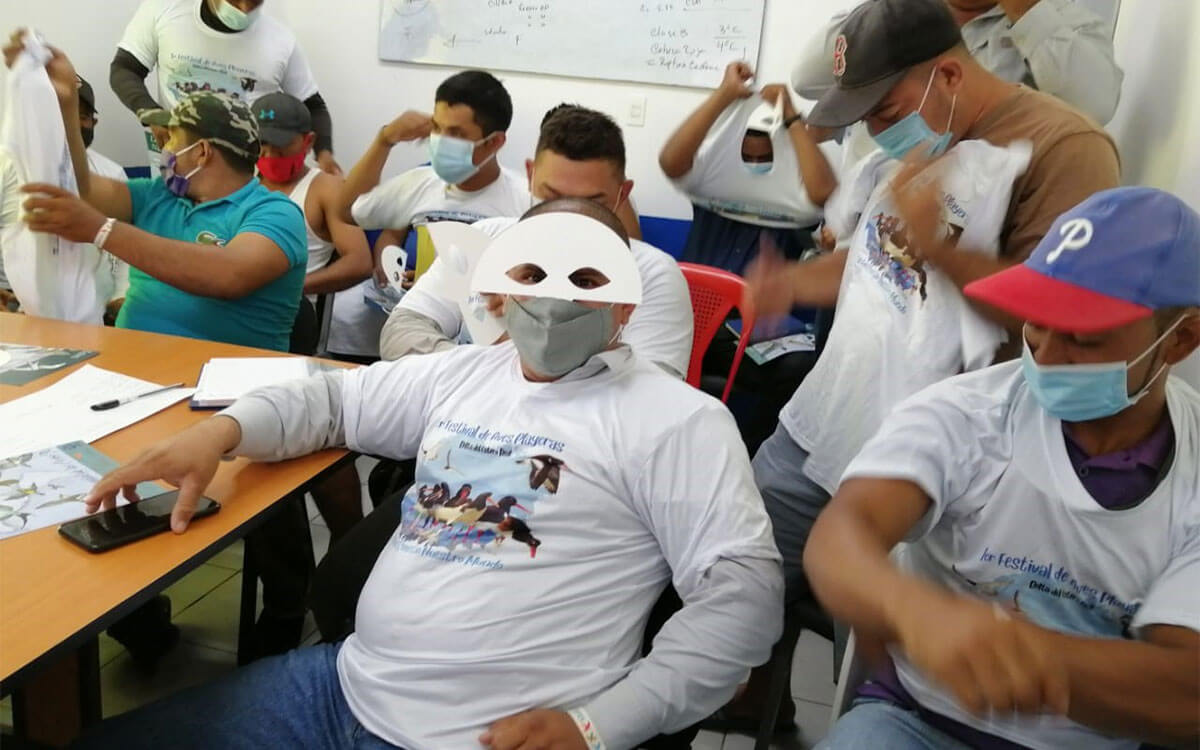
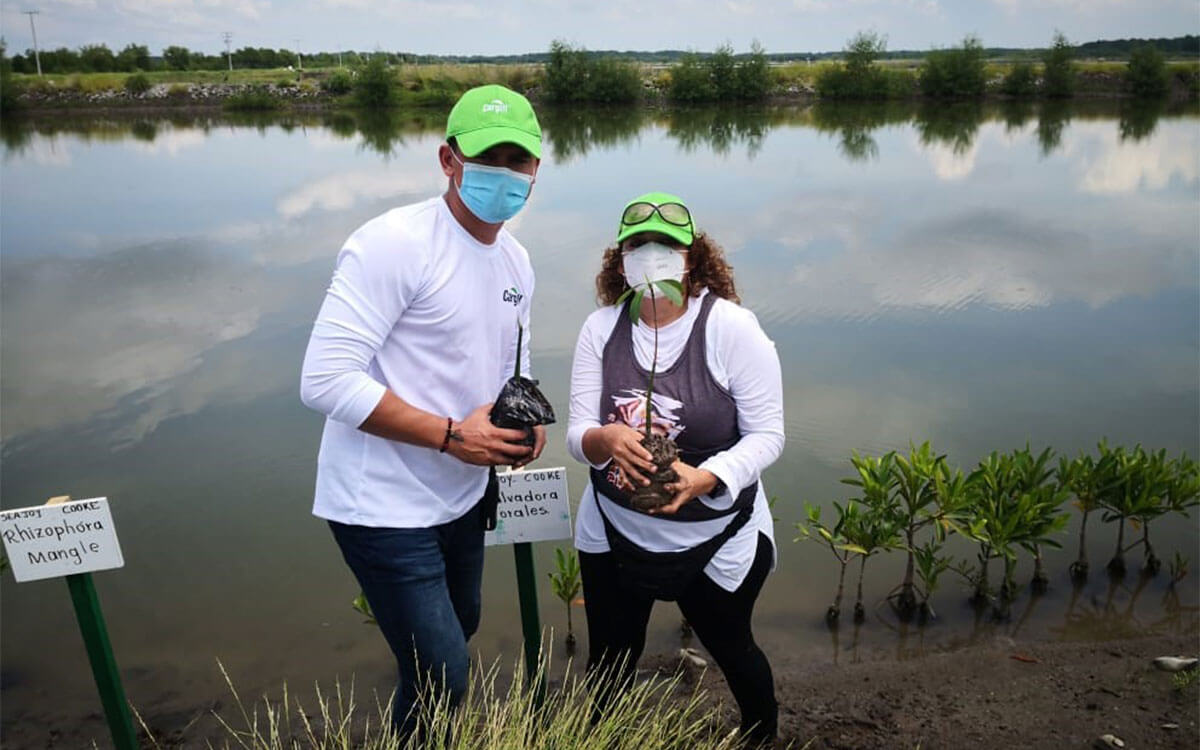
Left: Good practice workshop with staff of a shrimp-farm at the WHSRN site Delta del Estero Real, Nicaragua. Right: Planting mangroves at the WHSRN site Delta del Estero Real, Nicaragua. Photos: Salvadora Morales
.
Continuing along the Pacific coast, but this time in South America, at the Delta del Río Iscuandé in Colombia all activities were delayed and the trips by Asociación Calidris to the area were greatly reduced. In order to prepare for their return to the WHSRN site and other areas, Asociación Calidris developed a biosecurity protocol for trips and field work, to avoid the exposure of local communities to the virus, as well as to protect the field workers. The protocol included holding workshops and meetings in the open air, with all attendees wearing masks and maintaining social distancing in the “life zones or safe zones”, areas that were delimited with tape or marks on the floor and which kept the visitors from Asociación Calidris and members of the local community separated.
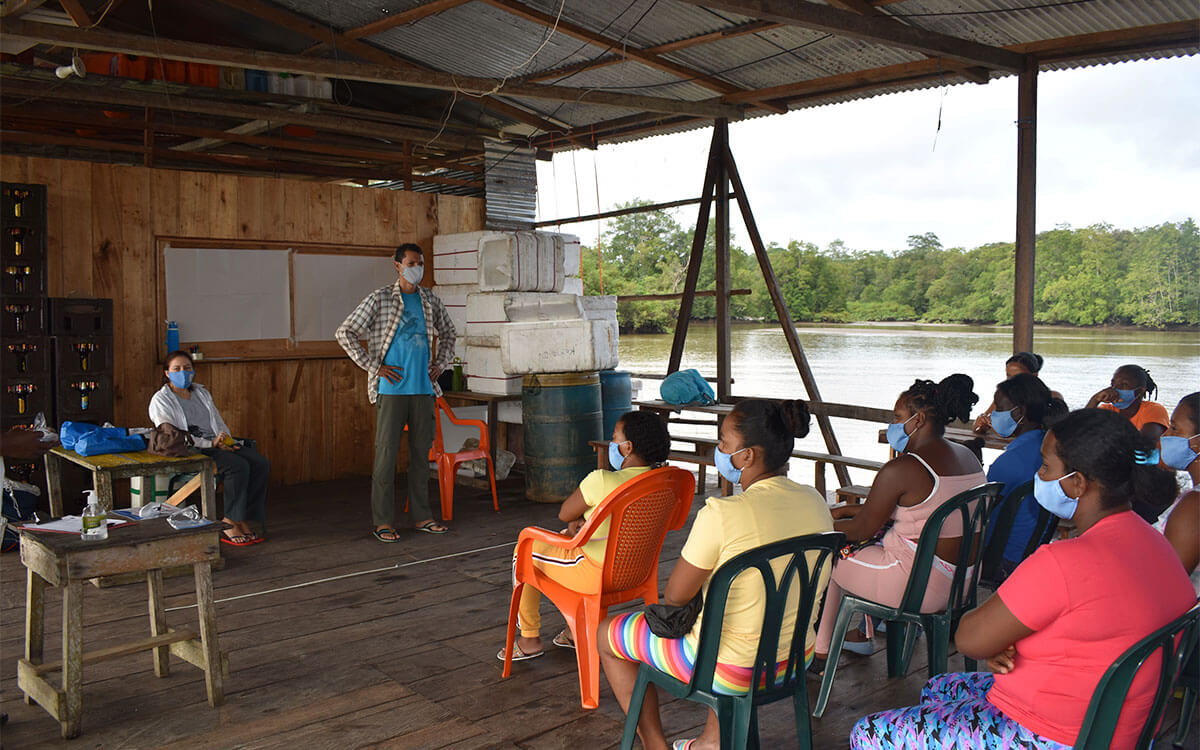
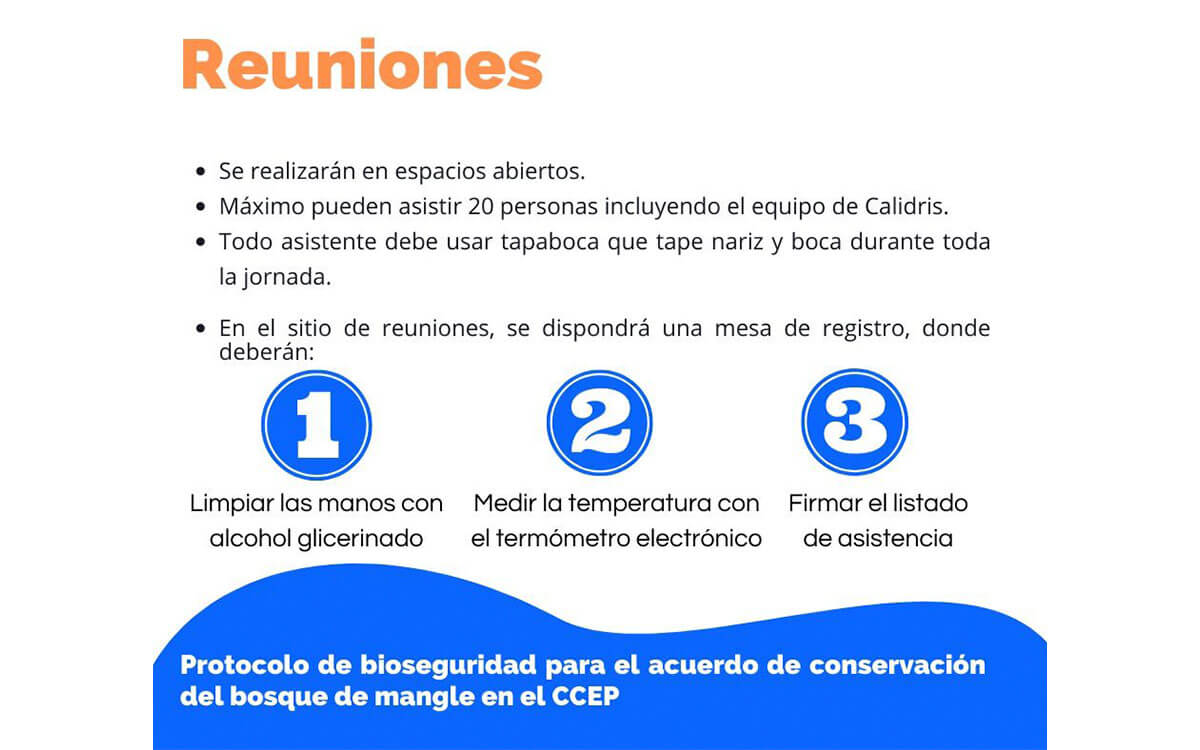
Left: Delimitation of the “Life Zone” during workshops at the WHSRN site Delta del Río Iscuandé. Photo: Asociación Calidris. Right: Aspects of the biosecurity protocol elaborated by Asociación Calidris for meetings with the local community at the WHSRN site Delta del Río Iscuandé. Image: Asociación Calidris.
At the three WHSRN sites in Ecuador Piscinas Artificiales de ECUASAL, Refugio de Vida Silvestre Isla Corazón y Fragata (REVISICOF) and Canal de Jambelí, activities were reduced. In the first salt production continued and shorebird monitoring was maintained. However, at REVISICOF, which is managed by the Ministry of the Environment, Water and Ecological Transition (Ministerio del Medio Ambiente, Agua y Transición Ecológica), the number of personnel was reduced, particularly the number of park guards and technicians. At the Canal de Jambelí, the local administrating communities of the territory suffered great economic losses, as the restrictions prevented them from carrying out their shrimp collection tasks, with predictable negative effect on their income.
Prior to the pandemic, the evaluation of ecosystem services at the Humedales de Maullín and the Humedales Orientales de Chiloé began to support the designation of these sites as Nature Sanctuaries in Chile. However, no sooner were the results made public and feedback received from the local communities and authorities to approve the evaluation, then the world was in quarantine, which was particularly strict in Chile. With the support of donors, Fundación Conservación Marina transformed their physical meetings into virtual workshops, and assured the connectivity of the persons involved and local authorities by covering their connection costs with prepaid cards.
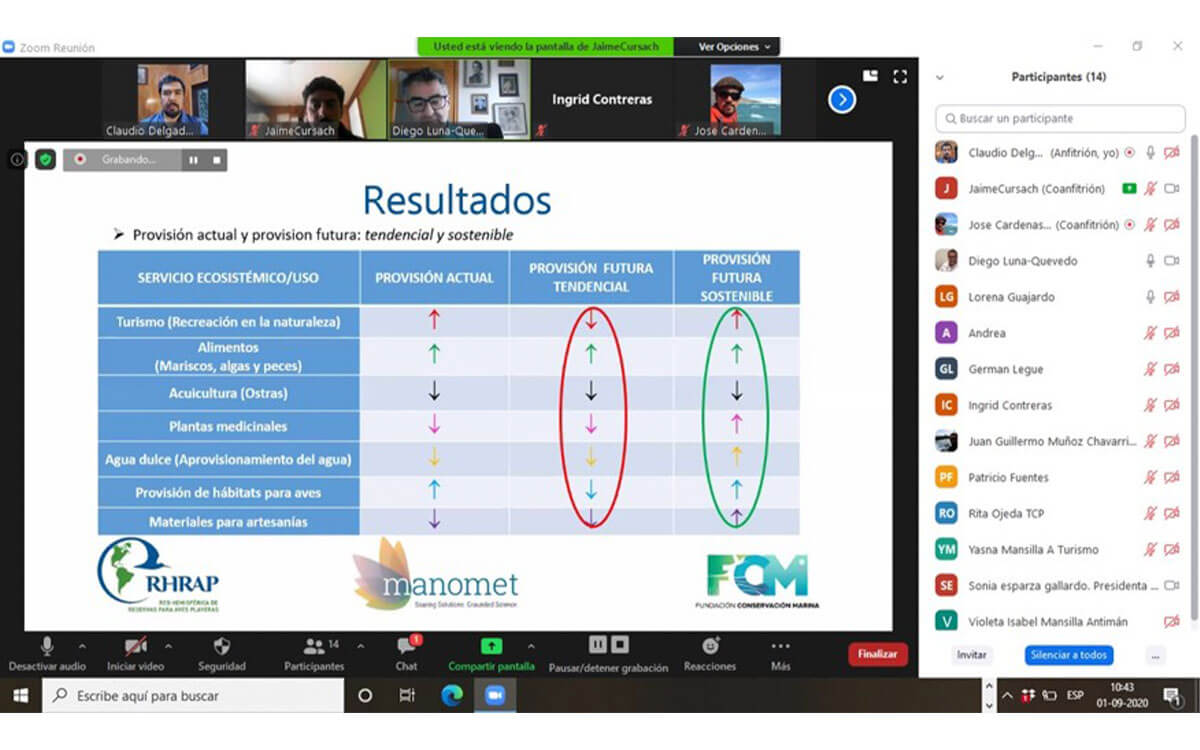
Feedback about the evaluation of ecosystem services with communities and local authorities at the WHSRN sites Humedales de Maullín and Humedales Orientales de Chiloé
On the Atlantic coast of South America at the Río Gallegos Estuary in Argentina, virtual training and awareness-raising activities were implemented. Monitoring and conservation activities were not regulated by the authority charged with biosecurity protocols, so it was not possible to obtain permits to carry out these activities. In August 2021, Ambiente Sur signed an agreement with the authority in charge to allow conservation activities to proceed again.
Interaction with producers and owners of key establishments for shorebirds were also hampered at Laguna de Rocha in Uruguay. Other field activities, including enforcement and surveillance were affected by the closure of all national Protected Areas imposed by the increasing number of Covid-19 cases in the country.
Finally, at Laguna Mar Chiquita in central Argentina, the Fundación Líderes de Ansenuza supported the efforts for designation of Ansenuza National Park through its education and communityengagement program Experiencia Ambientalia. Ambientalia has overcome many obstacles, mainly associated with restrictions on the number of people allowed to participate in group activities. The Foundation emphasizes that due to the reduction in the number of activities available for young people in the area, many have approached Ambientalia to join the process of designating a National Park.
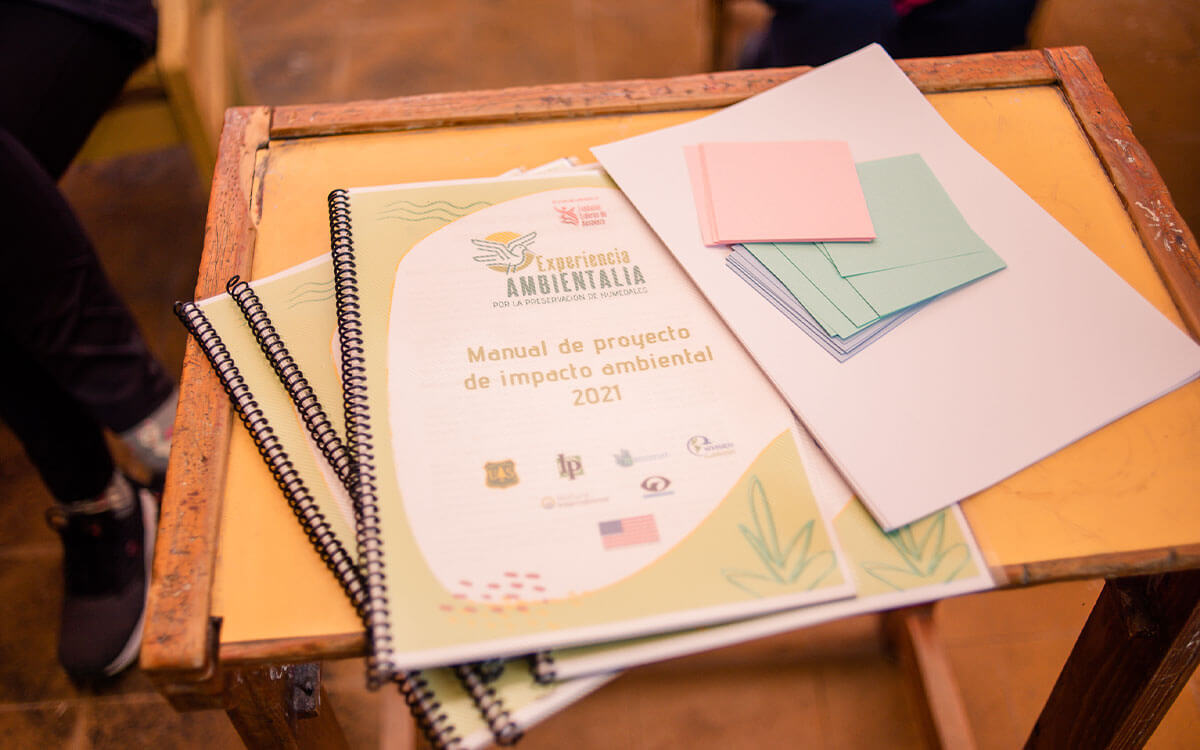
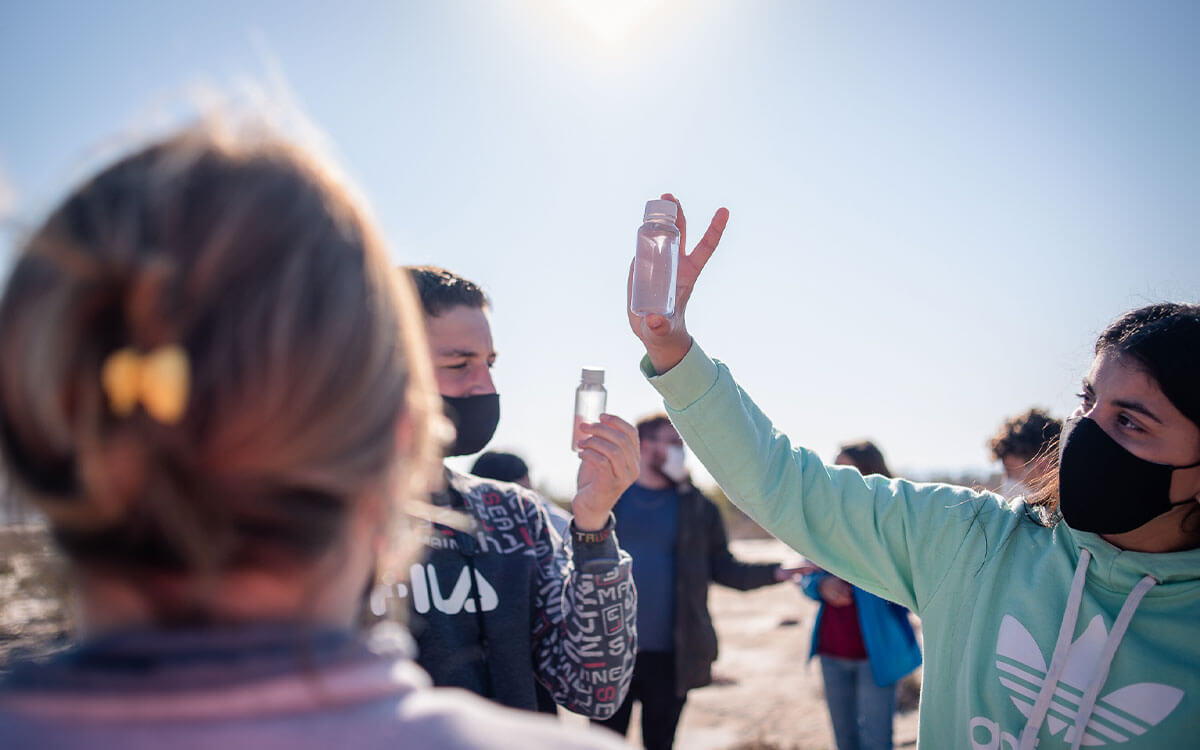
Left: Training materials from the Experiencia Ambientalia program. Photo: Fundación Líderes de Ansenuza. Right: Field trip with students from Experiencia Ambientalia. Photo: Fundación Líderes de Ansenuza.
The innovative solutions employed by the WHSRN sites to overcome the obstacles and complications caused by the Covid-19 pandemic, are a sign of resilience, adaptability, imagination and creativity. It is also undeniable that the donors and partners of these sites played a key role in facilitating the adaptation of activities and in trusting the decisions of those on the ground who know their territory.
As well as learning to use virtual tools more widely to attract new audiences and hold mass events under the restrictions, it is possible that the impact the restrictions imposed have had on monitoring and surveillance activities in areas important to shorebirds, or the effect of easing restrictions, has been overlooked. The impact of the decrease in disturbance control and monitoring during strict isolation, as well as human activities after the “opening”, is unknown at this time. It would be wise to begin a conversation about how we determine the effects of the disruption of conservation activities on shorebird populations.
If you would like to share information about how your site has adapted to the challenges imposed by the pandemic restrictions, you can contact Isadora
Cover Photo: Phalaropes at the Mono Lake WHSRN site. Photo: Ryan Carle.





